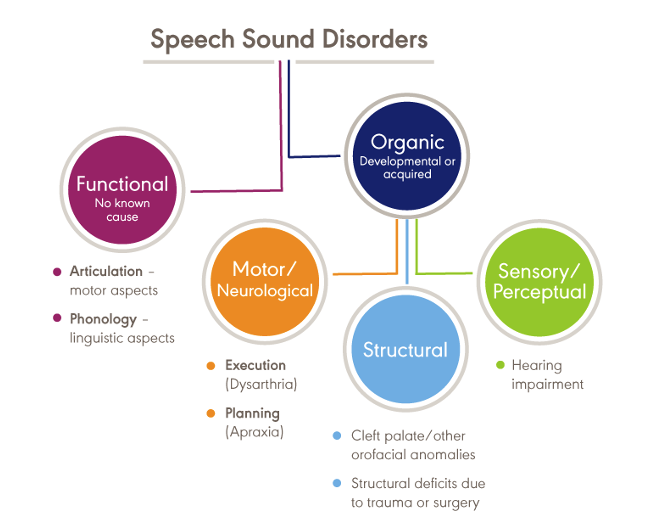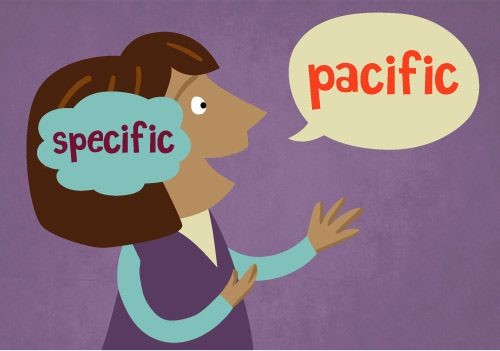Speech Sound Disorders
A speech sound disorder occurs when a person has difficulty producing speech sounds, affecting his or her ability to communicate. Children often make mistakes as their vocabulary grows, but a speech sound disorder occurs past the age at which they are expected to know how to make the correct sounds.
Sometimes, speech sound disorders continue into adulthood. Other adults develop speech problems following a stroke or traumatic head injury.
Types of Speech Sound Disorders

There are two main types of speech sound disorders: articulation disorders and phonological disorders.
Articulation disorders involve problems making sounds. Sounds may be substituted, omitted, added or distorted. This results in speech that is difficult for others to understand. Common problems include substituting the letter “r” with “w” (“wabbit” for “rabbit”), shortening words or speaking with a lisp.
Phonological disorders involve patterns of sound errors. Mistakes are made with entire groups of words; for instance, sounds made in the back of the mouth may be substituted with sounds made in the front of the mouth, e.g. substituting the letter “d” for “g” (“got” for “dot”). People with phonological disorders are often able to hear these errors when others speak, without picking up on their own mistakes.
Causes & Treatment
Many times, the cause of speech sound disorders is unknown. Children may not learn how to correctly pronounce certain sounds, and this can carry over into adulthood. Other times, the cause is physical in nature. Developmental disorders, genetic syndromes, neurological disorders, hearing loss and other illnesses may all contribute to speech sound disorders.
A speech-language pathologist(SLP) will thoroughly evaluate a patient to determine the cause of the disorder and recommend a course of treatment. He or she will work closely with the individual to improve articulation, reduce errors and demonstrate which sounds are correct and how to recognize when they are incorrect.
What is an Articulation Disorder:

An Articulation Disorder is a developmental disorder or delay caused by structural differences of the speech-sound articulators (e.g., jaw, tongue, lips, teeth, palate, soft palate) or by misuse of these structures when producing speech sounds. As children mature and gain greater control over the fine motor movements required for speech, articulation– the ability to accurately produce speech sounds– typically improves. However, when a child is unable to correctly articulate sounds that are developmentally expected, intervention is often required. Articulation disorders can persist into adulthood or be acquired later in life due to conditions such as stroke, brain injury, or head/neck cancer.
Assessment:
Articulation skills are assessed using standardized tests that compare a person’s speech to that of age and gender-matched peers. Additional assessment includes informal testing, observation, and extensive parent/patient interview.
Treatment:
Treatment of an articulation disorder includes the dynamic development of goals to target remediation of speech sound errors in age-appropriate and functional practice contexts. Treatment approaches are based on the principles of motor learning and developmental expectations. Home practice is imperative for optimal progress and to aid in the patient’s ability to use new skills outside of the clinic environment.
Phonology


What is Phonological Disorder?
A Phonological Disorder is a child’s persistent use of error patterns that extends beyond the time-frame expected for typical development. Most children use error patterns in early childhood while they develop the sound system specific to their language or languages, but these errors are expected to fade. Examples of phonological processes include cluster reduction (i.e., “poon” for “spoon”), final consonant deletion (i.e., “be” for “bed”), and gliding (i.e., “wed” for “red”).
Assessment:
Phonological Disorders are assessed using standardized tests, conversation samples, observation, and parent / caregiver interview.
Treatment:
Treatment goals are developed to correct these error patterns based on what is expected for the child’s age and development. Treatment for a Phonological Disorder may be offered in blocks (e.g., eight weeks of therapy with an eight week break to follow). Blocked therapy allows the child to receive intensive therapy that is then followed up by parents guiding practice at home. The length of treatment depends on the number of phonological errors present and the child’s response to intervention.
Links for more information:
American Speech and Hearing Association: www.asha.org
Call MVM Vākśravaṇa Clinic at 080-69956566 for more information or to schedule an appointment.
